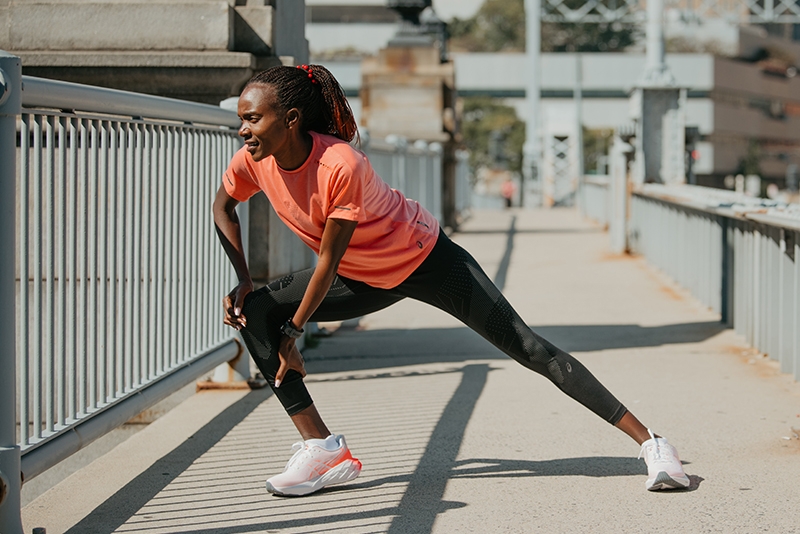Managing Usual Running Discomforts: Causes, Solutions, and Prevention
As runners, we usually encounter different pains that can hinder our performance and enjoyment of this physical activity. By exploring the origin factors for these operating discomforts, we can reveal targeted remedies and preventative measures to ensure a smoother and extra meeting running experience.
Typical Running Pain: Shin Splints
Shin splints, an usual running discomfort, often result from overuse or incorrect footwear during physical activity. The repetitive stress and anxiety on the shinbone and the tissues attaching the muscle mass to the bone leads to swelling and discomfort.
To prevent shin splints, people should slowly enhance the intensity of their workouts, put on proper footwear with appropriate arch assistance, and preserve adaptability and strength in the muscular tissues surrounding the shin (running strategy). Additionally, integrating low-impact activities like swimming or cycling can aid keep cardiovascular physical fitness while enabling the shins to recover.
Usual Running Pain: IT Band Syndrome
In addition to shin splints, an additional widespread running pain that athletes typically encounter is IT Band Syndrome, a condition triggered by swelling of the iliotibial band that leaves the external thigh and knee. IT Band Syndrome normally shows up as pain on the exterior of the knee, particularly throughout activities like running or biking. The iliotibial band is a thick band of fascia that attaches the aware of the shin, and when it comes to be irritated or limited, it can massage against the thigh bone, causing discomfort and pain.
Runners experiencing IT Band Syndrome may notice a stinging or hurting experience on the external knee, which can intensify with continued task. Aspects such as overuse, muscle mass discrepancies, improper running kind, or poor warm-up can contribute to the development of this condition. To avoid and reduce IT Band Disorder, joggers ought to concentrate on extending and reinforcing exercises for the hips and upper legs, correct footwear, progressive training progression, and resolving any biomechanical concerns that may be aggravating the problem. Disregarding the signs and symptoms of IT Band Syndrome can bring about chronic concerns and prolonged healing times, stressing the significance of early treatment and proper administration approaches.
Typical Running Discomfort: Plantar Fasciitis

Plantar Fasciitis can be associated to different aspects such as overtraining, inappropriate shoes, working on tough surface areas, or having high arcs or this content level feet. To avoid and alleviate Plantar Fasciitis, joggers can include extending workouts for the calves and plantar fascia, wear encouraging shoes, preserve a healthy weight to lower stress on the feet, and slowly increase running strength to prevent sudden stress and anxiety on the plantar fascia. If signs and symptoms continue, it is suggested to consult a medical care expert for correct diagnosis and therapy choices to address the problem effectively.
Usual Running Pain: Jogger's Knee
After addressing the obstacles of Plantar Fasciitis, one more prevalent concern that joggers typically face is Jogger's Knee, a typical running pain that can prevent athletic efficiency and cause pain throughout physical task. Runner's Knee, additionally understood as patellofemoral discomfort disorder, manifests as pain around or behind the kneecap. Joggers experiencing this pain might really feel a dull, hurting discomfort while running, going up or down staircases, or after long term periods of sitting.
Usual Running Pain: Achilles Tendonitis
Generally afflicting joggers, Achilles Tendonitis is an agonizing condition that impacts the Achilles ligament, causing pain and potential restrictions in physical task. The Achilles tendon is a thick band of tissue that attaches the calf muscles to the heel bone, vital for tasks like running, leaping, and walking - my site. Achilles Tendonitis often creates because of overuse, inappropriate shoes, inadequate extending, or unexpected increases in exercise
Symptoms of Achilles Tendonitis consist of pain and rigidity along the tendon, specifically in the morning or after periods of lack of exercise, swelling that intensifies with task, and potentially bone stimulates in chronic instances. To stop Achilles Tendonitis, it is necessary to extend correctly in the past and after running, use ideal footwear with appropriate support, slowly raise the intensity of exercise, and cross-train to lower repetitive stress and anxiety on the tendon. Treatment might involve rest, ice, compression, elevation (RICE method), physical treatment, orthotics, and in serious situations, surgical procedure. Early intervention and proper care are critical for managing Achilles Tendonitis effectively and stopping long-term complications.
Final Thought
